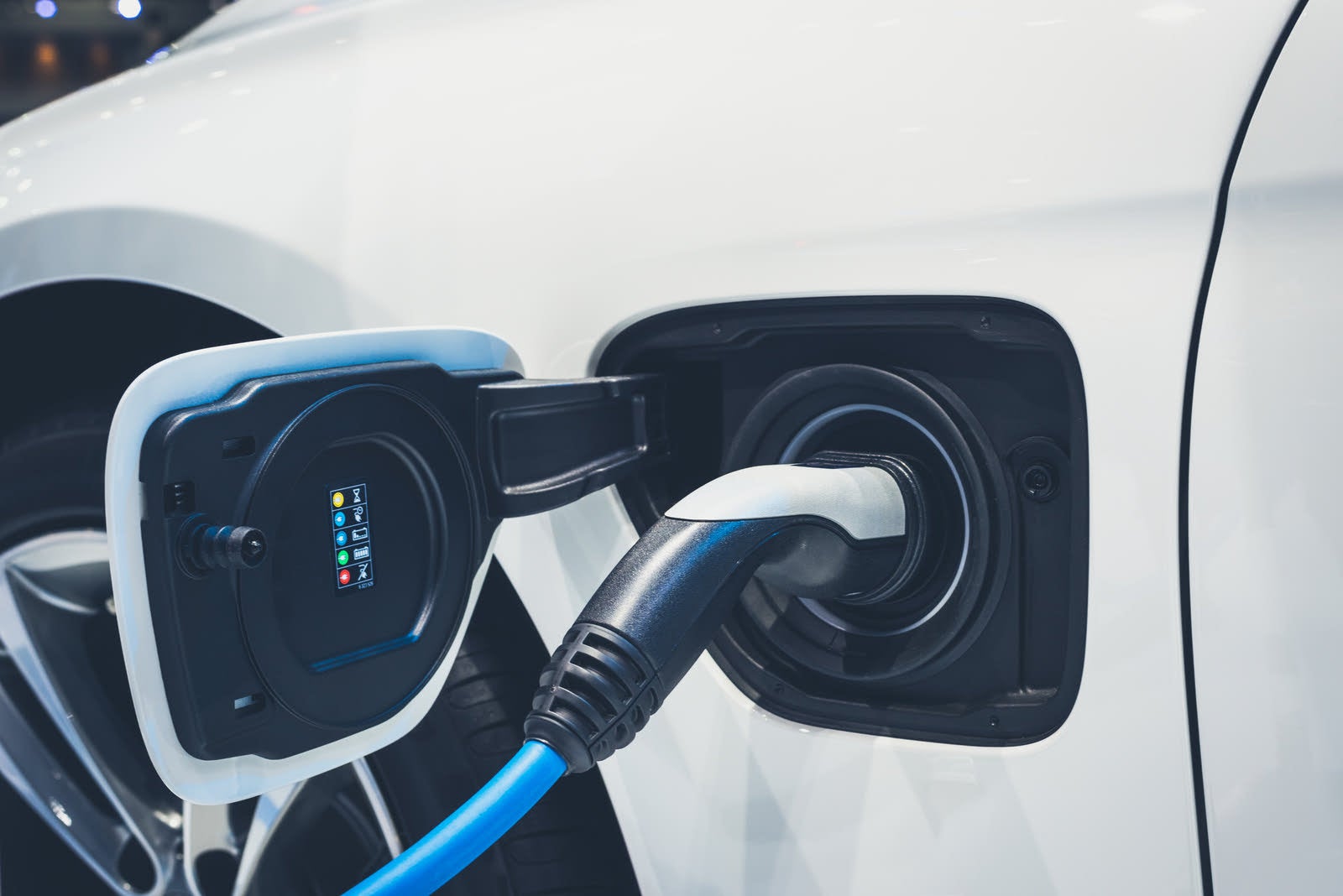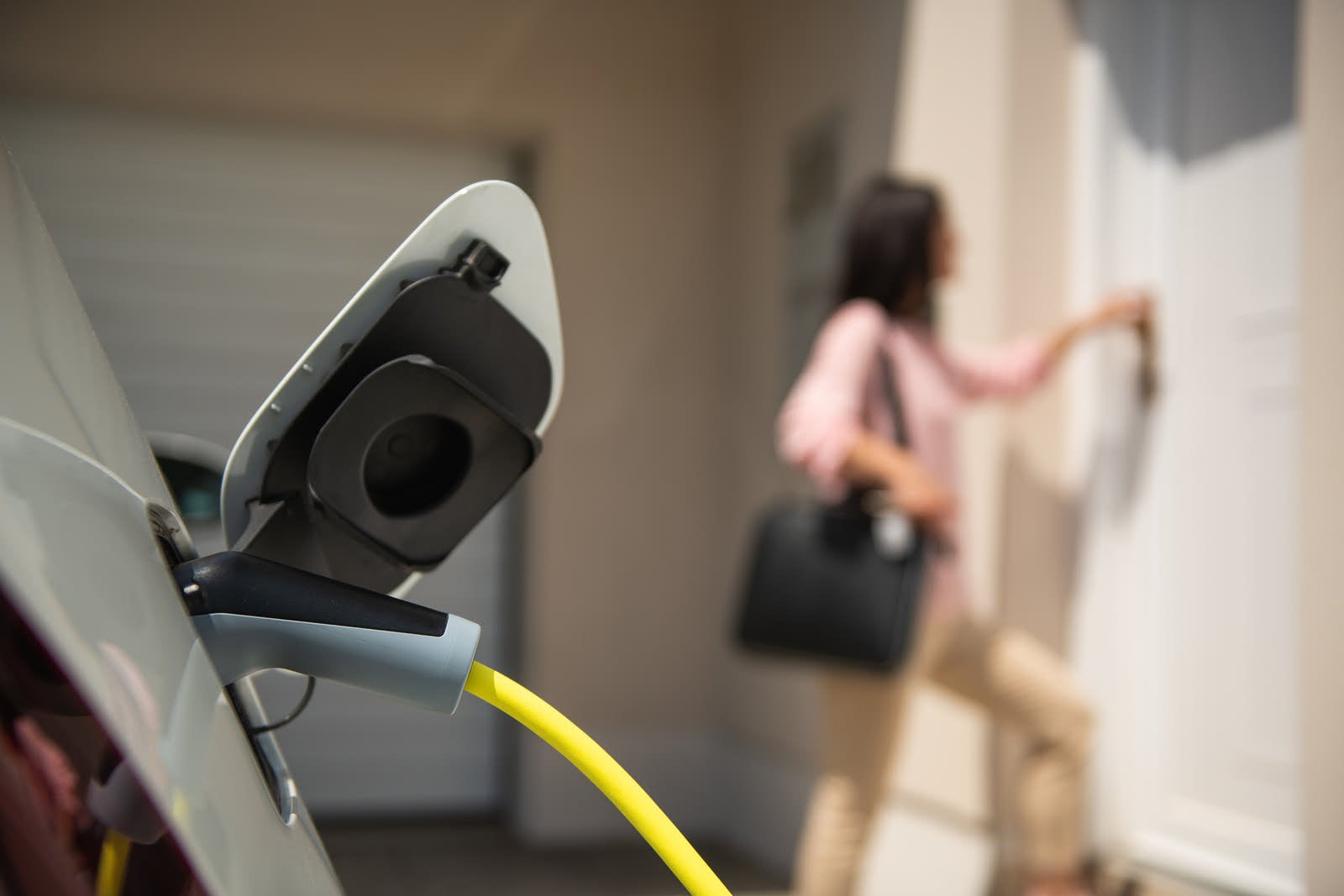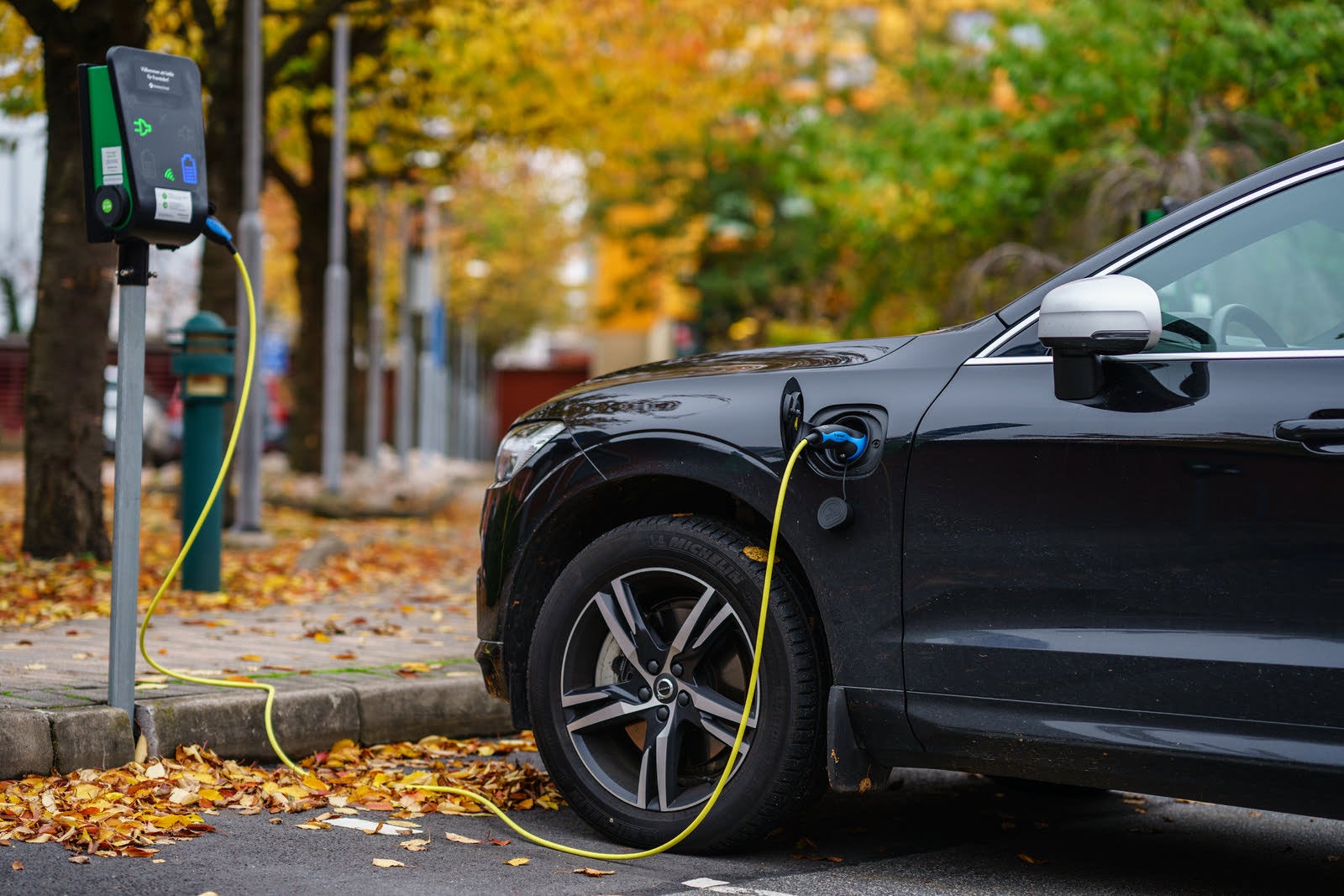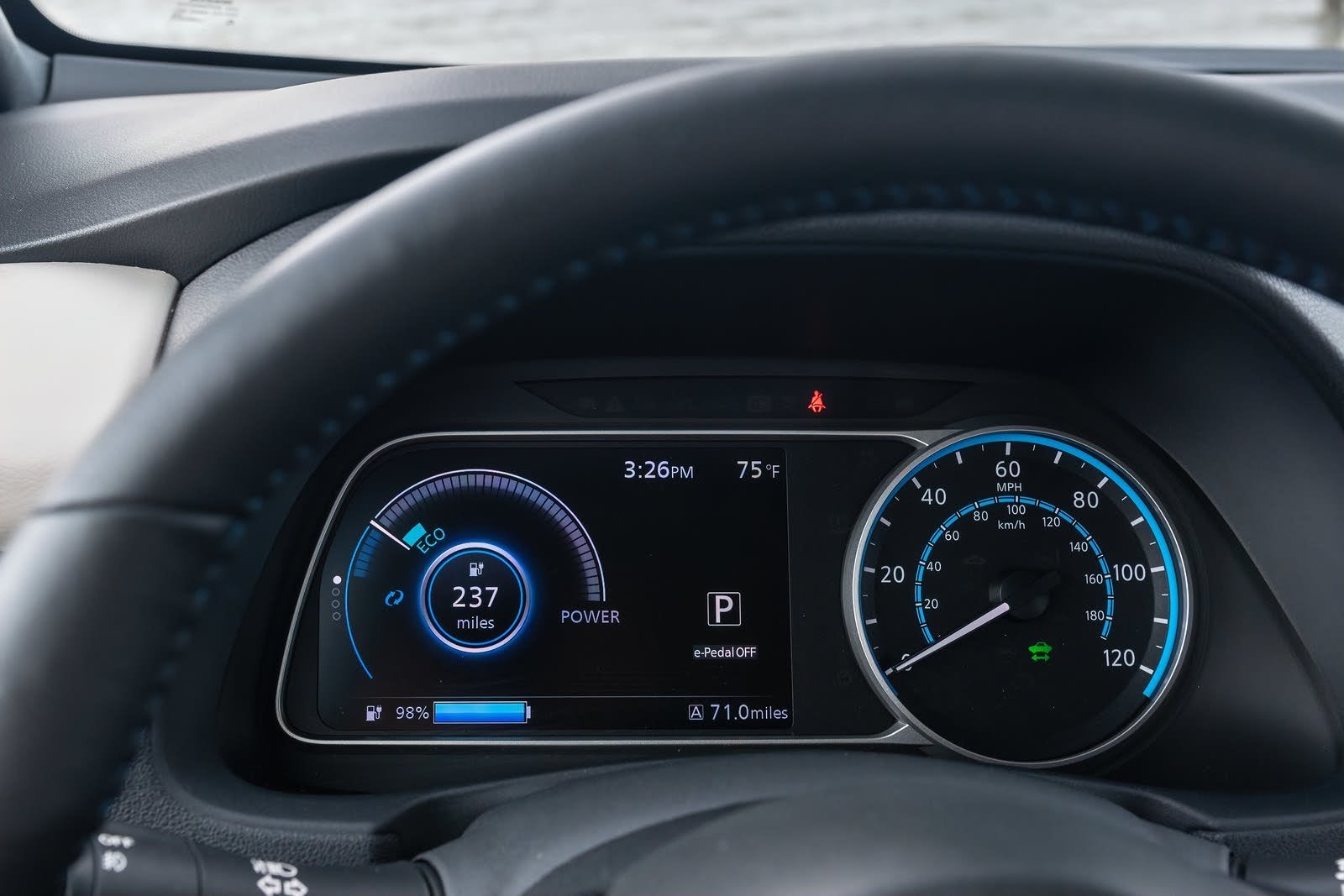There are really only two good reasons to stick with an internal-combustion-powered car over an EV at this point: Miles of driving range and ease of filling the tank. The range issue is quickly getting solved, and the electric car charging issue is, too, for some. If you’re a particular kind of driver or live in a particular domicile, keeping an electric car charged can be much easier than pumping gas. You’ve got a number of different options at your disposal, and all of them offer some convenient wins. There are some basics to get out of the way first, though:
The Plug

The other consideration is the plug, or, more formally, the charging port. Unfortunately, manufacturers haven’t 100 percent standardized the charging ports on EVs, which is annoying at best.
If you’re using a Level 2 charger, this isn’t an issue. Every EV in the United States built after 2000 uses something called a J1772 connector for Level 2 charging.
When you get into Level 3 charging, there are three different types of charging ports:
CCS: an acronym for Combined Charging System, basically the Society of Automotive Engineers (SAE) standard for fast charging.
CHAdeMO: The etymology for CHAdeMO could fill a book. It’s an abbreviation of “CHArge de MOve", or "move by charge.” The name comes from the Japanese phrase Ocha demo ikagadesu ka, which translates to "How about a cup of tea?", indicating about how long it would take to top up your battery. We told you it was a long story.
Tesla: Of course Tesla has its own charging port. If you see a Tesla Supercharger station, you can charge only a Tesla at it. However, Teslas have an adapter that lets them charge at CHAdeMO chargers.
Home Charging

The first and most convenient option is to charge your car at home. You have two options for getting this done:
Level 1 Charger: The Level 1 charger is what your EV came with from the factory. You plug one end of the charging cable into a conventional 120-volt wall socket and the other end into the car. Simple home charging. If you're driving a plug-in hybrid electric vehicle (or PHEV), a Level 1 charging cable may be all you need, since your car's battery has only enough kilowatt hours to provide about 36 miles of all-electric driving range.
Level 2 Charger: A Level 2 charger doesn’t come with the car., so you'll have to purchase one. They’re available from a number of suppliers including Siemens at the high end (about $750) and no-name outfits at the low end (around $415).
They either need to be hard-wired or you need access to a 240-volt socket like the one an electric clothes dryer plugs into. If you don’t have either within convenient distance to the car, you’ll have to pay an electrician to wire it up for you. If you live in a modern house with 200-amp service, adding a plug can be relatively inexpensive (likely around $300). If you live in an ancient house with 60-amp service, glass fuses, and knob-and-tube wiring, it can get expensive. You'll need to first get the house up to code before you add the Level 2 charger plug.
If you rent a house, your landlord may or may not allow you to add the charger. If you live in an apartment building, you probably won’t be able to install one at all. However, some apartment buildings have begun offering Level 2 chargers as a desirable amenity.
Charging Stations

Depending on your location, there are going to be different densities of public charging stations. If you're in North Dakota, you're not going to find as many electric car chargers as you would if you lived in California.
Level 2 Charger: Most of the charging networks available at this point are going to be Level 2 chargers. They include places like the airport, train stations, or maybe your office if you work for a progressive company. Depending on whose charger you use, you may be paying for the electricity. We’ll get into costs in a minute.
Level 3 or DC Fast Charging: This is the Formula 1 Pit Crew of EV charging. The problem is that there aren’t many of these DC Fast Charging stations. In our home state of Massachusetts, out of 555 charging stations across the state, only 7 percent, or 39 are DC Fast Chargers. Many of those are located at Massachusetts Turnpike Service Plazas and car dealerships that sell EVs.
Apps and Software

Keeping an electric vehicle charged isn’t nearly as time- and thought-consuming as one might assume, but it does require a different mode of thinking.
As an EV owner, on any given day, you could use one, two, or many of these charging methods. Most commuting days, you’re probably going to get away with plugging your car into your Level 2 charger at night, bringing it to a full charge while you sleep, and giving you enough miles of range to get to and from the office. Other days, you might have a longer trip to the airport, where you’d plug your car into a charger while simultaneously enjoying the preferred parking spots on the first level of the parking garage. At other times, you might need to plan out where the Level 3 chargers are on a long trip, allowing yourself some extra time to charge along the way.
Automakers have developed apps to help you with this, and all modern electric cars have this functionality programmed into their suite of infotainment technology. It can automatically find you the closest charging station, even filtering on just the Level 3 chargers on your route. You’ll also want to familiarize yourself with the apps that are available for your car, which will allow you to program the car to charge itself when electricity rates are cheapest in your area.
Even the Nissan Leaf—one of the least expensive EVs on the market now—has an app with incredible power. For example, it allows the driver to pre-heat or pre-cool the car’s interior remotely, while the car is plugged in. On a brutally hot August day, you can walk into a comfortable car while saving precious electrons by pre-cooling the car while it’s still plugged in. The Chevrolet Bolt EV’s app allows for route planning based on your state of charge and available charging locations, alleviating the “range anxiety” that would-be EV drivers may be paralyzed by.
Many of the functions on these apps are also available via desktop computers, too, allowing you to keep an eye on your state of charge while you’re at work. The idea behind all of this software is to make the ownership of an EV as simple and convenient as possible.
Right now, gas stations outnumber EV charging stations in the United States by 10 to 1, but that ratio seems to be dropping by the day. The charging infrastructure is growing. EVs are here, and they’re not going anywhere. There’s never been a better time to experience what they have to offer.
Related Topics
The Beginner’s Guide to Alternative Fuel Sources
All You Need to Know About Electric Vehicle Tax Credits
Understanding the Levels of Self-Driving Cars
